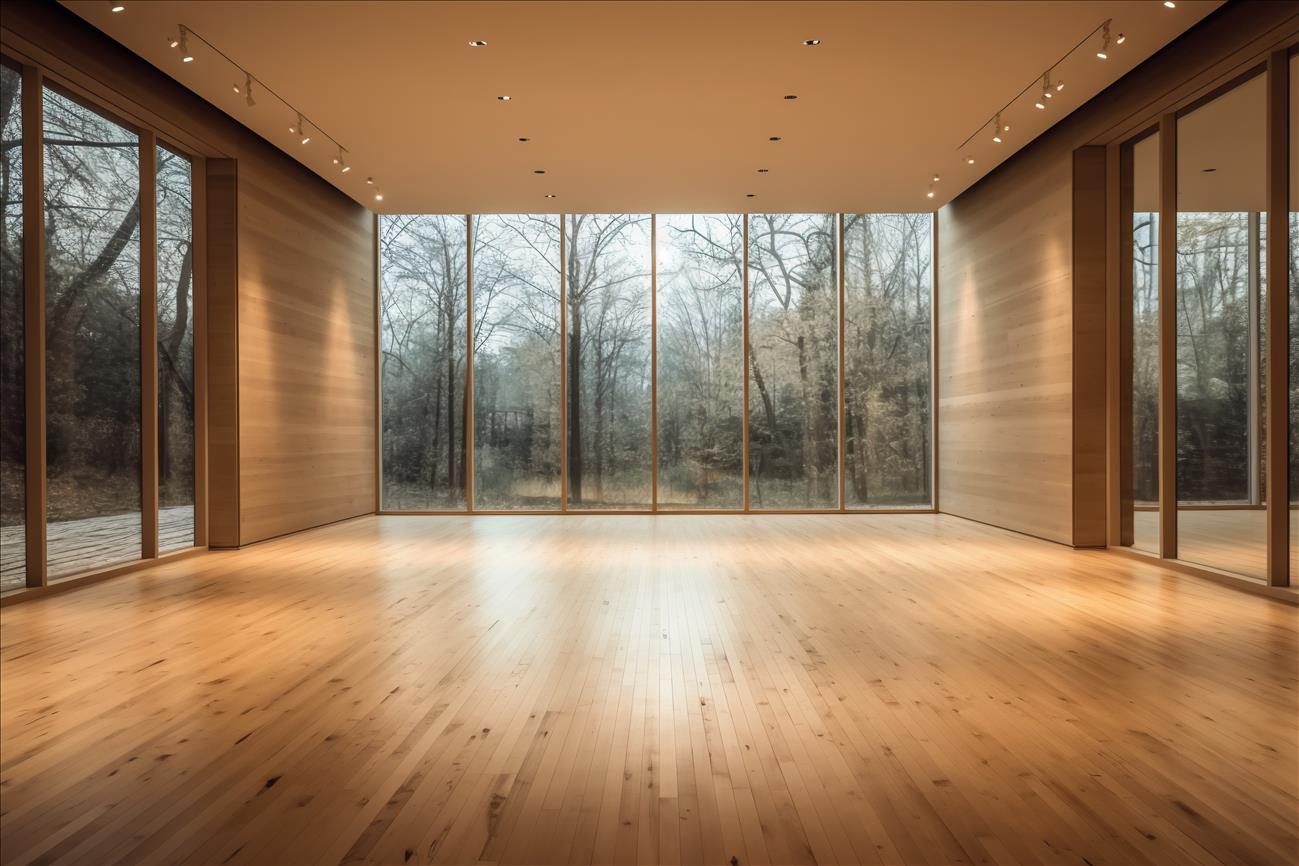8 Things to Know Before Installing Hardwood Floors


Hardwood flooring is the most popular and durable type of flooring, and it has universal appeal to buyers. If you’re stuck with carpet or tile floors, one of the most common renovations for new homeowners is to install hardwood floors.
Installing hardwood floors in your home isn't as daunting as it might sound. But it’s a little more complicated than just tearing up your carpet or linoleum and slapping down some hardwood planks.
Putting in hardwood floors is labor intensive and can be pretty expensive, but that doesn’t stop most homeowners. A third said they plan to spend more than $10,000 on renovations in 2024.
You’ll need to think hard about vapor barriers, underlays, finishes, and a lot more. Here's what you need to know before you install new hardwood floors.
If you’re going the DIY route, know what you’re in for
A lot of homeowners opt to install hardwood floors themselves because it can save thousands of dollars in labor costs. This is an especially popular route for house flippers who are working with narrow profit margins. But it can be difficult and complicated if you don’t have woodworking experience.
You’ll need to use tools, such as a nail gun, staple gun, and various saws. You’ll also need to do some very precise measurements. A small- to medium-size room can take several hours or longer if you’re inexperienced. If you’re doing multiple rooms, it might be worth the money to hire a professional.
On the other hand, if you’re using manufactured “snap-in” hardwood floors, installation will be a lot easier.
Floor prep is half the job
If you’re installing hardwood floors, don’t forget to include pre-installation floor prep in your time and labor estimates. You’ll need to empty the room of furniture, then strip the current flooring — whether it’s carpet, tile, or old wood.
In many cases, you can just install new hardwood over your old floors, but keep in mind that you’ll be raising the level of your floor by doing so. Raise it too often and you may have trouble opening and closing doors or raising appliances higher than the level of the countertops.
Removing old flooring can be hazardous to your health
If your house was built before the 1980s, you may have asbestos tiling or adhesive. Only trained professionals should tear up asbestos-based materials because doing so can be extremely harmful to your health. Don’t start ripping up old floors until you’ve established beyond a doubt that they don’t contain asbestos.
Old wood floors can also be painted with lead-based paint, which is another health hazard. Don’t sand or see any wood that’s painted with lead-based paint without wearing eye protection or a respirator. It's extremely important to meticulously clean up any dust afterward.
The upside of doing this dangerous remediation is that not only is the house safer for your family, but it also has a much higher resale value if you move. Houses that can be marketed as free of asbestos and lead paint are the houses that sell for the most money.
Choose the right underlay
The underlay is the layer of material between your hardwood and your subfloor. It cushions, insulates, and acts as a moisture barrier, so it protects your hardwood from rot and extends its lifespan.
It’s important to pair the right underlay with the right hardwood flooring. In general, harder woods need a softer, more cushioning underlay — such as foam or rubber. Softer woods need a supportive underlay, such as cork.
Some hardwood floors come with an underlay, but not all. If you do end up installing your own underlay, make sure your subfloor is clean and dry before applying.
If you use engineered hardwood floors that can be snapped or glued in, you may not need an underlay. Many of these products can be glued directly to the concrete subfloor.
Think about plank size
Most hardwood floors come in 2- or 3-inch widths, but wider planks have become more popular. They work especially well in large spaces, where the increased width feels more appropriate to the proportions of the room. Just keep in mind that wider planks, especially when you start to exceed 7 or 8 inches, can be exponentially more expensive than smaller ones.
Engineered flooring is easier, but less durable
Engineered hardwood, which can be glued or snapped into place, is a lot easier to install than traditional plank flooring. Many types of engineered floors can be glued directly to the concrete subfloor and don’t require any sawing or nailing. It’s also thinner, so there’s less chance of the planks interfering with doors or reducing the ceiling height. However, because it’s thinner, it can be louder, and it might be too thin to sand and refinish in the future.
To site finish or prefinish?
If you buy raw hardwood flooring, you’ll need to have it finished in the home once it's installed. It's an extra step in the work, but it also gives you control over the final appearance. If you want the floor to have more or less sheen or a darker or lighter stain, you can have it done to your specifications.
On the other hand, prefinished hardwood comes already stained and coated, so what you see is what you get. If it doesn’t quite match your furnishings once it’s installed, you won’t have many options.
Different woods offer different qualities
Look at the different hardwoods to see what tone and grain works best with your rooms. Oak is the most popular hardwood, especially white oak. It’s quite a bit lighter than many other hardwoods, though.
If you’re looking for darker, richer tones, consider walnut — although it’s slightly softer. Other popular picks are ash, cherry, maple, and hickory. Each comes with their own pros, cons, and price tags. Choose carefully because you’ll be walking on and looking at these floors for several years.
